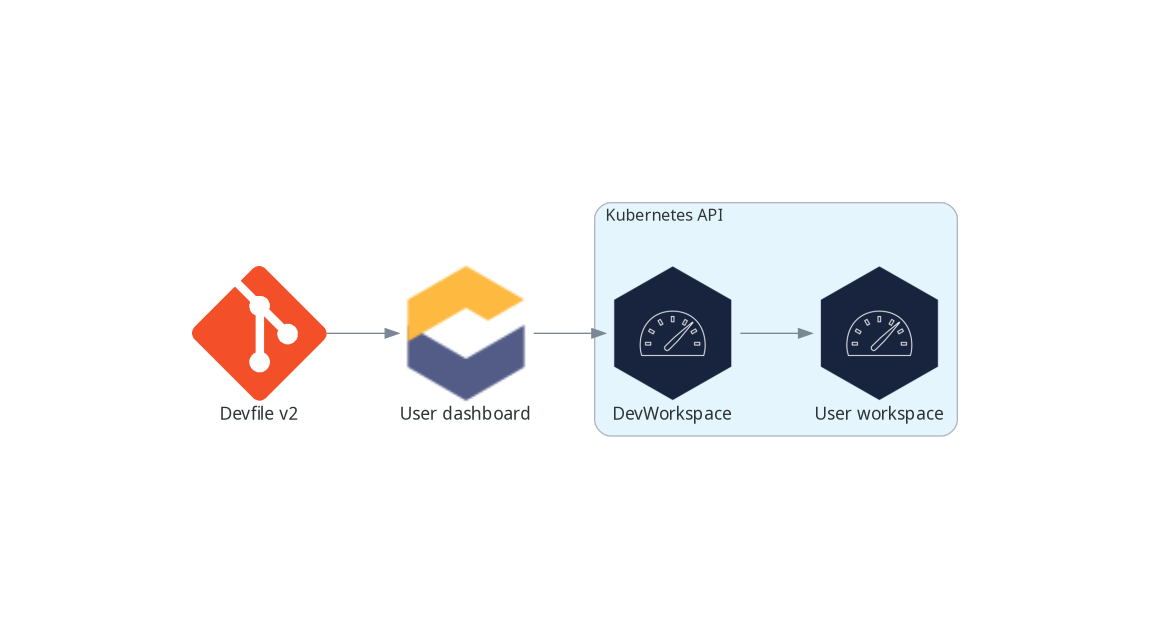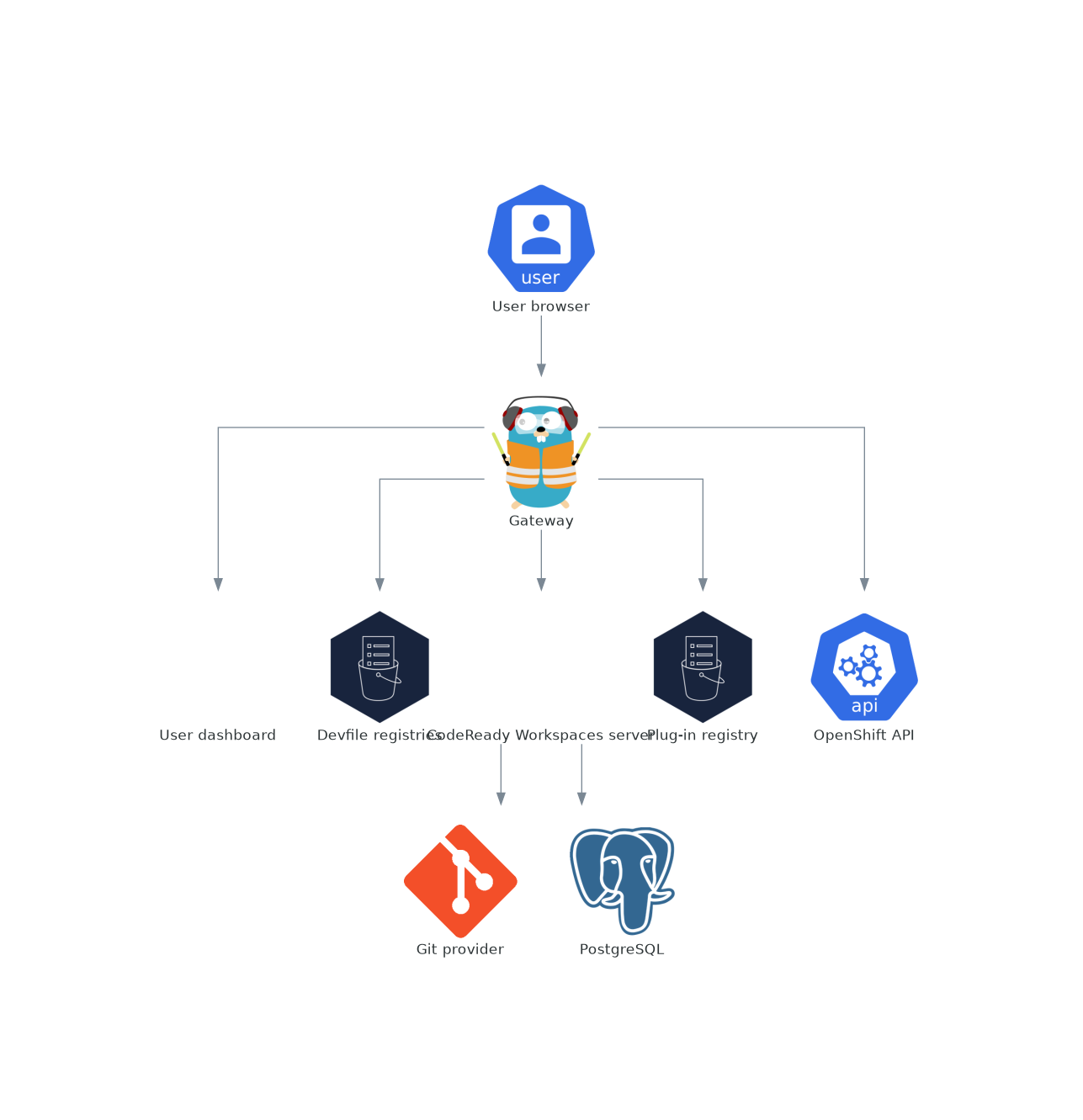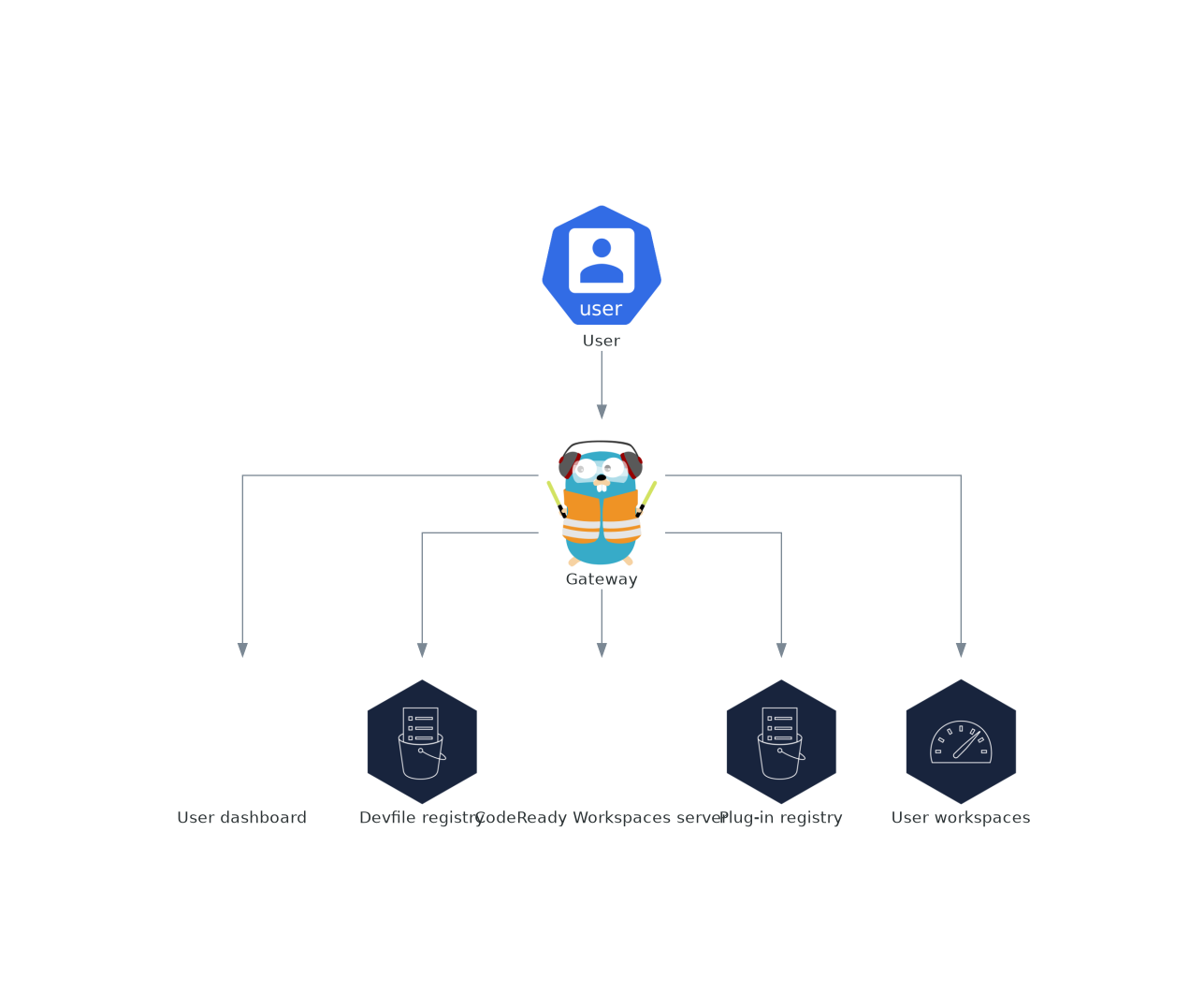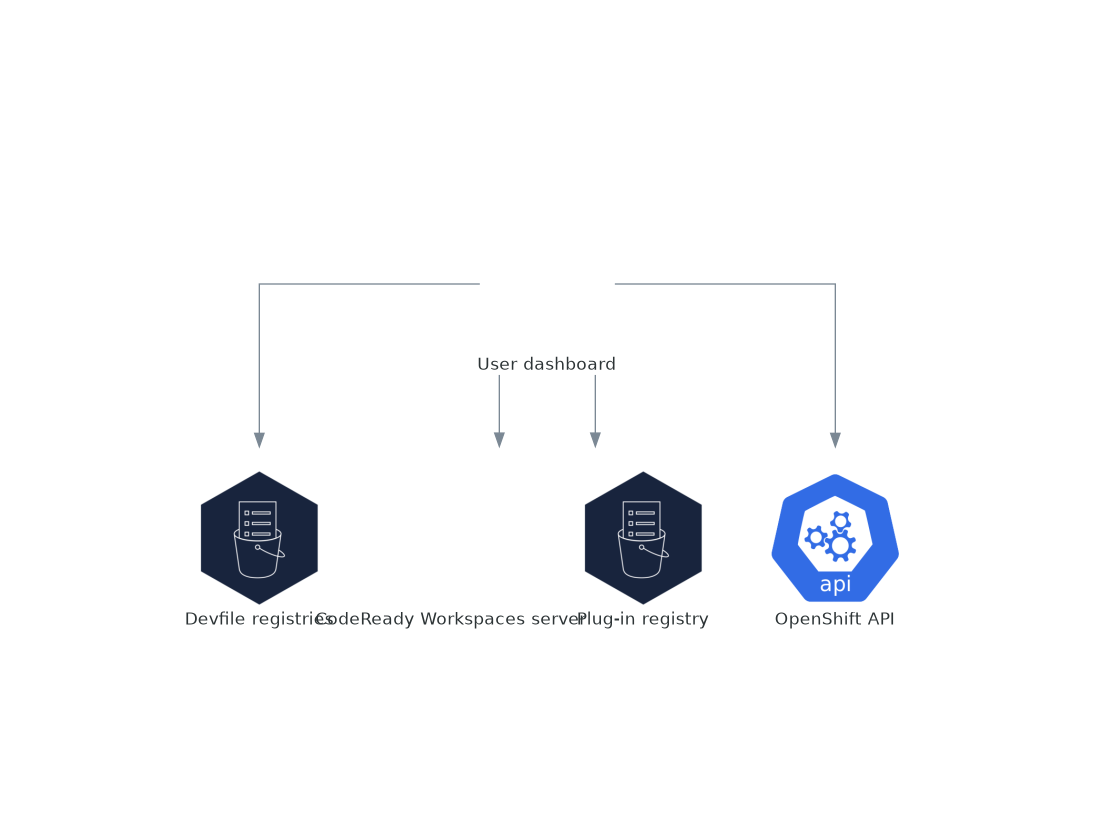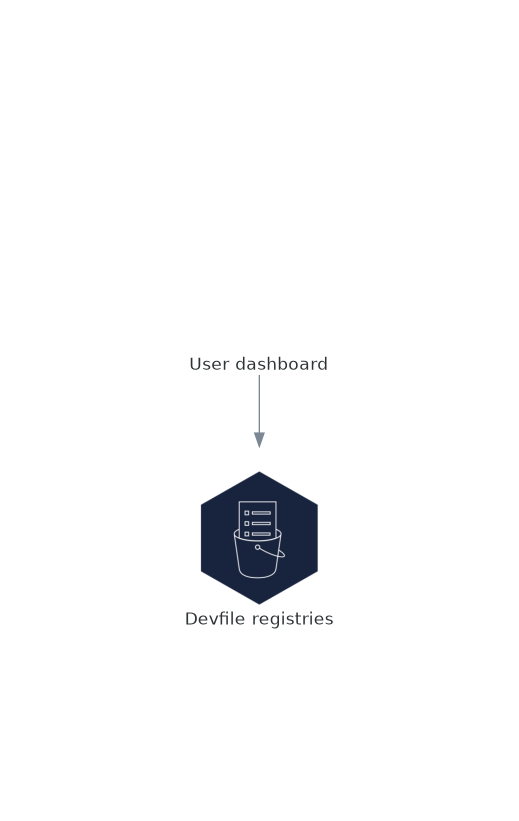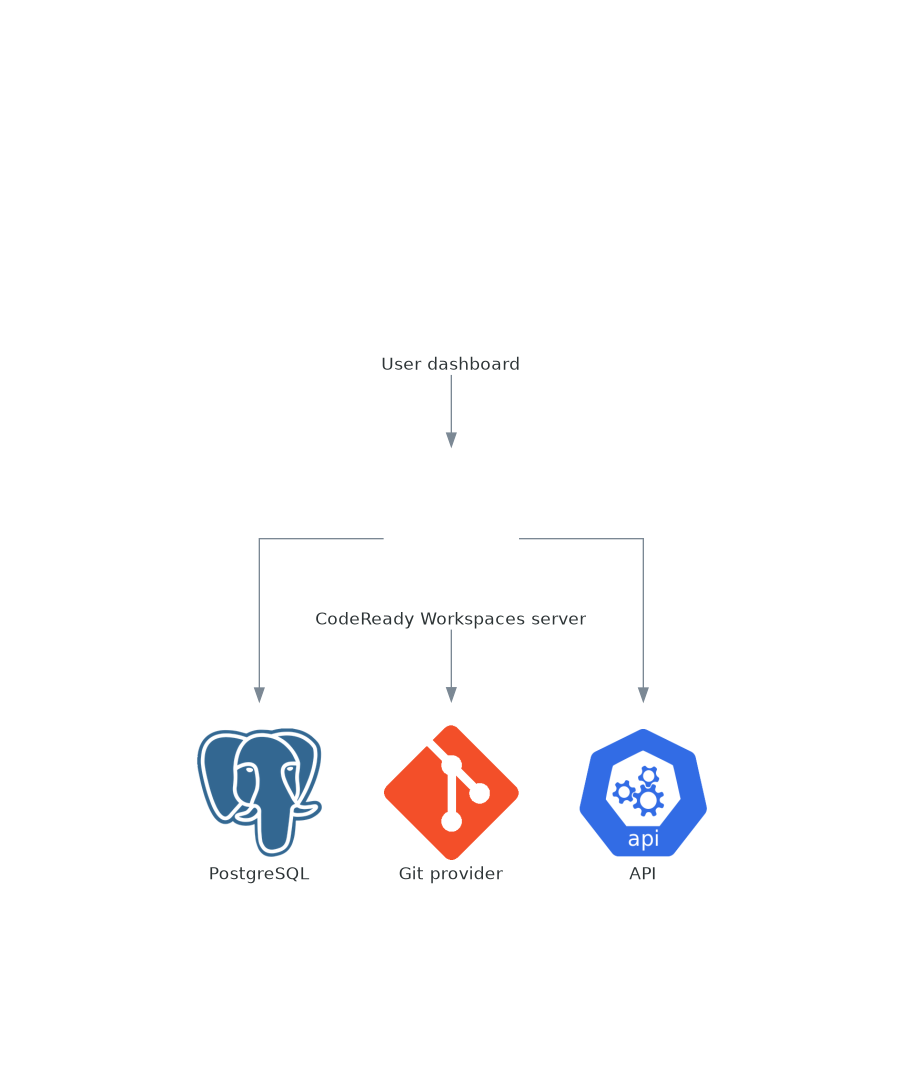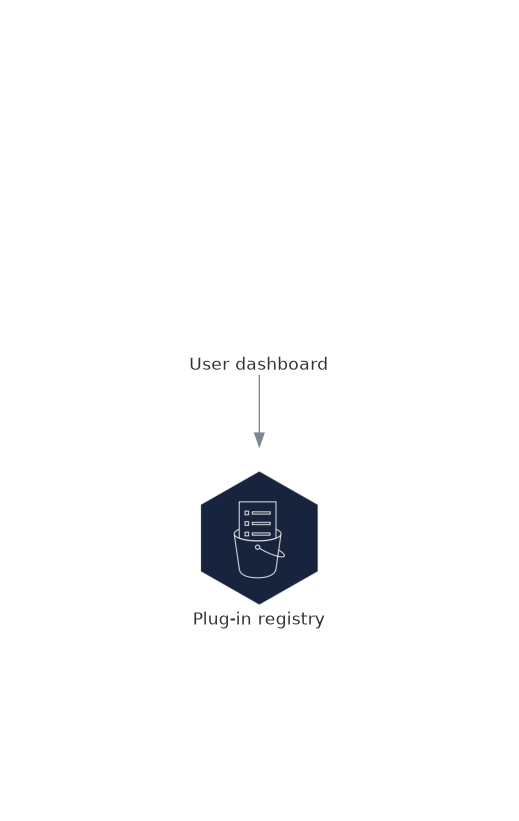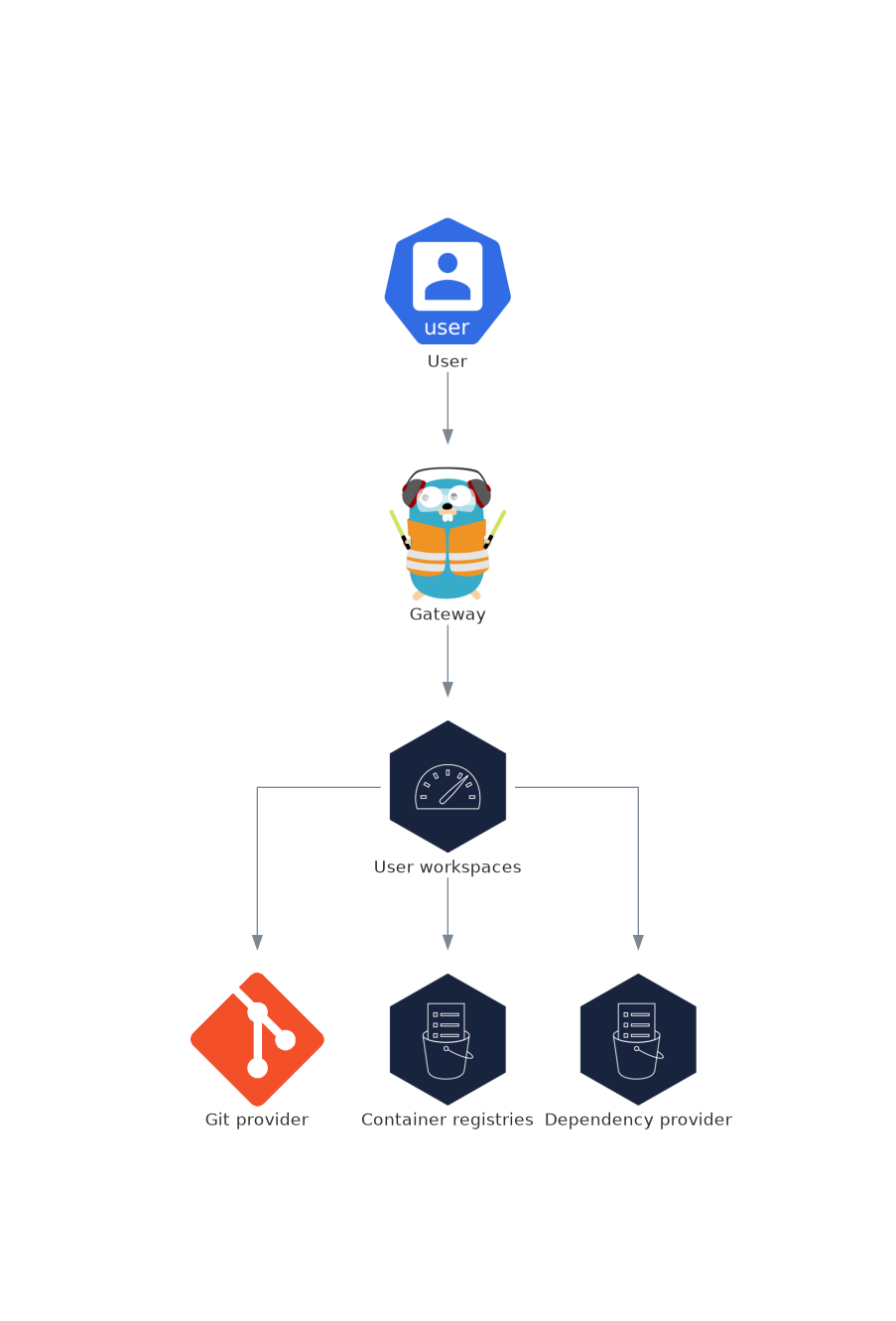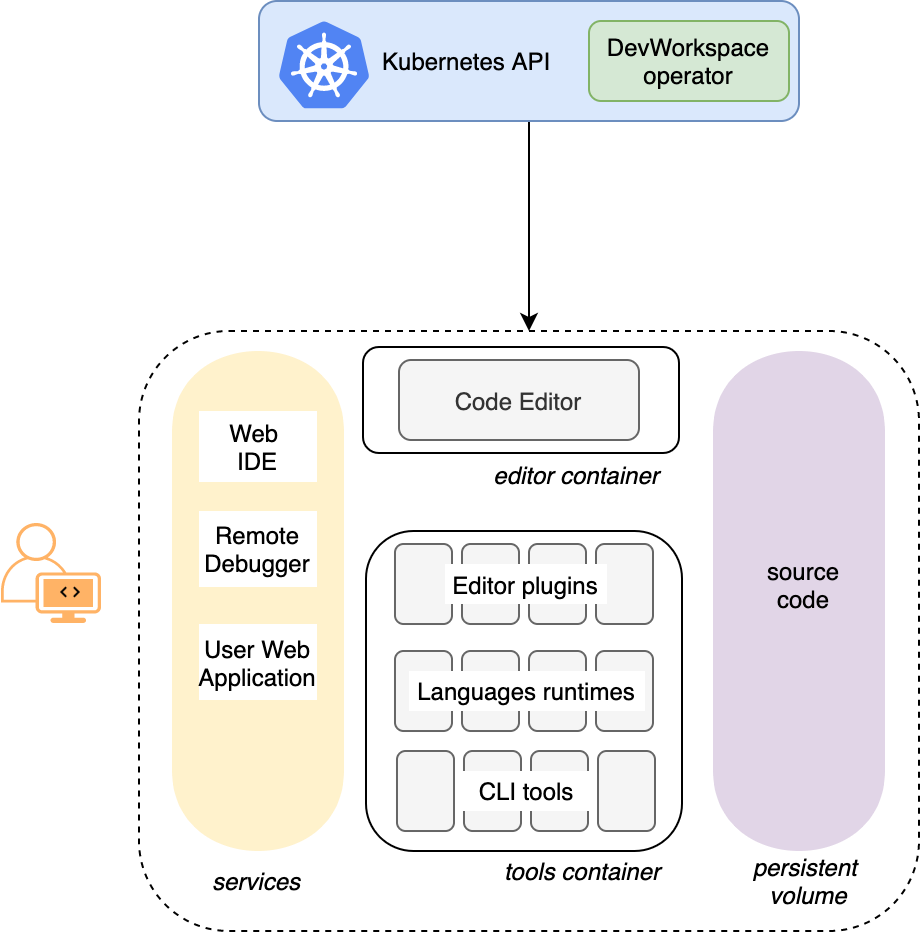This documentation is for a release that is no longer maintained
See documentation for the latest supported version.Ce contenu n'est pas disponible dans la langue sélectionnée.
Chapter 1. Preparing the installation
To prepare a OpenShift Dev Spaces installation, learn about OpenShift Dev Spaces ecosystem and deployment constraints:
1.1. Supported platforms
OpenShift Dev Spaces 3.0 is available on listed platforms with the listed supported installation methods:
| Platform | Architectures | Deployment method |
|---|---|---|
| OpenShift Container Platform 4.10 |
| |
| OpenShift Dedicated 4.10 |
| |
| Red Hat OpenShift Service on AWS (ROSA) 4.10 |
|
1.2. OpenShift Dev Spaces architecture
Figure 1.1. High-level OpenShift Dev Spaces architecture with the DevWorkspace operator
OpenShift Dev Spaces runs on three groups of components:
- OpenShift Dev Spaces server components
- Manage User project and workspaces. The main component is the User dashboard, from which users control their workspaces.
- DevWorkspace operator
-
Creates and controls the necessary OpenShift objects to run User workspaces. Including
Pods,Services, andPeristentVolumes. - User workspaces
- Container-based development environments, the IDE included.
The role of these OpenShift features is central:
- DevWorkspace Custom Resources
- Valid OpenShift objects representing the User workspaces and manipulated by OpenShift Dev Spaces. It is the communication channel for the three groups of components.
- OpenShift role-based access control (RBAC)
- Controls access to all resources.
Additional resources
1.2.1. OpenShift Dev Spaces server components
The OpenShift Dev Spaces server components ensure multi-tenancy and workspaces management.
Figure 1.2. OpenShift Dev Spaces server components interacting with the DevWorkspace operator
Additional resources
- Section 1.2.1.1, “OpenShift Dev Spaces operator”
- Section 1.2.1.2, “DevWorkspace operator”
- Section 1.2.1.3, “Gateway”
- Section 1.2.1.4, “User dashboard”
- Section 1.2.1.5, “Devfile registries”
- Section 1.2.1.6, “OpenShift Dev Spaces server”
- Section 1.2.1.7, “PostgreSQL”
- Section 1.2.1.8, “Plug-in registry”
1.2.1.1. OpenShift Dev Spaces operator
The OpenShift Dev Spaces operator ensure full lifecycle management of the OpenShift Dev Spaces server components. It introduces:
CheClustercustom resource definition (CRD)-
Defines the
CheClusterOpenShift object. - OpenShift Dev Spaces controller
- Creates and controls the necessary OpenShift objects to run a OpenShift Dev Spaces instance, such as pods, services, and persistent volumes.
CheClustercustom resource (CR)On a cluster with the OpenShift Dev Spaces operator, it is possible to create a
CheClustercustom resource (CR). The OpenShift Dev Spaces operator ensures the full lifecycle management of the OpenShift Dev Spaces server components on this OpenShift Dev Spaces instance:
1.2.1.2. DevWorkspace operator
The DevWorkspace operator extends OpenShift to provide DevWorkspace support. It introduces:
- DevWorkspace custom resource definition
- Defines the DevWorkspace OpenShift object from the Devfile v2 specification.
- DevWorkspace controller
- Creates and controls the necessary OpenShift objects to run a DevWorkspace, such as pods, services, and persistent volumes.
- DevWorkspace custom resource
- On a cluster with the DevWorkspace operator, it is possible to create DevWorkspace custom resources (CR). A DevWorkspace CR is a OpenShift representation of a Devfile. It defines a User workspaces in a OpenShift cluster.
Additional resources
1.2.1.3. Gateway
The OpenShift Dev Spaces gateway has following roles:
- Routing requests. It uses Traefik.
- Authenticating users with OpenID Connect (OIDC). It uses OpenShift OAuth2 proxy.
- Applying OpenShift Role based access control (RBAC) policies to control access to any OpenShift Dev Spaces resource. It uses `kube-rbac-proxy`.
The OpenShift Dev Spaces operator manages it as the che-gateway Deployment.
It controls access to:
Figure 1.3. OpenShift Dev Spaces gateway interactions with other components
Additional resources
1.2.1.4. User dashboard
The user dashboard is the landing page of Red Hat OpenShift Dev Spaces. OpenShift Dev Spaces users browse the user dashboard to access and manage their workspaces. It is a React application. The OpenShift Dev Spaces deployment starts it in the devspaces-dashboard Deployment.
It need access to:
Figure 1.4. User dashboard interactions with other components
When the user requests the user dashboard to start a workspace, the user dashboard executes this sequence of actions:
- Collects the devfile from the Section 1.2.1.5, “Devfile registries”, when the user is creating a workspace from a code sample.
- Sends the repository URL to Section 1.2.1.6, “OpenShift Dev Spaces server” and expects a devfile in return, when the user is creating a workspace from a remote devfile.
- Reads the devfile describing the workspace.
- Collects the additional metadata from the Section 1.2.1.8, “Plug-in registry”.
- Converts the information into a DevWorkspace Custom Resource.
- Creates the DevWorkspace Custom Resource in the user project using the OpenShift API.
- Watches the DevWorkspace Custom Resource status.
- Redirects the user to the running workspace IDE.
1.2.1.5. Devfile registries
Additional resources
The OpenShift Dev Spaces devfile registries are services providing a list of sample devfiles to create ready-to-use workspaces. The Section 1.2.1.4, “User dashboard” displays the samples list on the Dashboard devfile-registry deployment.
Figure 1.5. Devfile registries interactions with other components
1.2.1.6. OpenShift Dev Spaces server
The OpenShift Dev Spaces server main functions are:
- Creating user namespaces.
- Provisioning user namespaces with required secrets and config maps.
- Integrating with Git services providers, to fetch and validate devfiles and authentication.
The OpenShift Dev Spaces server is a Java web service exposing an HTTP REST API and needs access to:
- Section 1.2.1.7, “PostgreSQL”
- Git service providers
- OpenShift API
Figure 1.6. OpenShift Dev Spaces server interactions with other components
1.2.1.7. PostgreSQL
OpenShift Dev Spaces server uses the PostgreSQL database to persist user configurations such as workspaces metadata.
The OpenShift Dev Spaces deployment starts a dedicated PostgreSQL instance in the postgres Deployment. You can use an external database instead.
Figure 1.7. PostgreSQL interactions with other components
1.2.1.8. Plug-in registry
Each OpenShift Dev Spaces workspace starts with a specific editor and set of associated extensions. The OpenShift Dev Spaces plug-in registry provides the list of available editors and editor extensions. A Devfile v2 describes each editor or extension.
The Section 1.2.1.4, “User dashboard” is reading the content of the registry.
Figure 1.8. Plug-in registries interactions with other components
1.2.2. User workspaces
Figure 1.9. User workspaces interactions with other components
User workspaces are web IDEs running in containers.
A User workspace is a web application. It consists of microservices running in containers providing all the services of a modern IDE running in your browser:
- Editor
- Language auto-completion
- Language server
- Debugging tools
- Plug-ins
- Application runtimes
A workspace is one OpenShift Deployment containing the workspace containers and enabled plug-ins, plus related OpenShift components:
- Containers
- ConfigMaps
- Services
- Endpoints
- Ingresses or Routes
- Secrets
- Persistent Volumes (PVs)
A OpenShift Dev Spaces workspace contains the source code of the projects, persisted in a OpenShift Persistent Volume (PV). Microservices have read-write access to this shared directory.
Use the devfile v2 format to specify the tools and runtime applications of a OpenShift Dev Spaces workspace.
The following diagram shows one running OpenShift Dev Spaces workspace and its components.
Figure 1.10. OpenShift Dev Spaces workspace components
In the diagram, there is one running workspaces.
1.3. Calculating OpenShift Dev Spaces resource requirements
The OpenShift Dev Spaces Operator, DevWorkspace Controller, and user workspaces consist of a set of pods. The pods contribute to the resource consumption in terms of CPU and RAM limits and requests. Learn how to calculate resources, such as memory and CPU, required to run Red Hat OpenShift Dev Spaces.
1.3.1. OpenShift Dev Spaces Operator requirements
The OpenShift Dev Spaces Operator manages six operands running in six distinct pods. The following table presents the default resource requirements of each of these operands.
| Pod | Container names | Default memory limit | Default memory request |
|---|---|---|---|
| OpenShift Dev Spaces Server | OpenShift Dev Spaces | 1 Gi | 512 MiB |
| OpenShift Dev Spaces Gateway |
| 4 Gi, 256Mi, 512Mi, 512Mi | 128 Mi, 64Mi, 64Mi, 64Mi |
| OpenShift Dev Spaces Dashboard |
| 256 Mi | 32 Mi |
| PostgreSQL |
| 1 Gi | 512 Mi |
| Devfile registry |
| 256 Mi | 32 Mi |
| Plug-in registry |
| 256 Mi | 32 Mi |
The OpenShift Dev Spaces Operator, which powers all the operands, consists of a single container with the 64Mi memory request and 256Mi limit. These default values are sufficient when the OpenShift Dev Spaces Operator manages a relatively big amount of OpenShift Dev Spaces workspaces. For even larger deployments, consider increasing the defaults.
Additional resources
1.3.2. DevWorkspace Operator requirements
The DevWorkspace Operator consists of 3 pods. The following table presents the default resource requirements of each of these pods.
| Pod | Container name | Default memory limit | Default memory request |
|---|---|---|---|
| DevWorkspace Controller Manager |
| 1 Gi | 100 Mi |
| DevWorkspace Operator Catalog |
| N/A | 50 Mi |
| DevWorkspace Webhook Server |
| 300 Mi | 20 Mi |
These default values are sufficient when the DevWorkspace Controller manages a relatively big amount of OpenShift Dev Spaces workspaces. For larger deployments, consider increasing the defaults.
Additional resources
1.3.3. Workspaces requirements
This section describes how to calculate the resources required for a workspace. That is the sum of the resources required for each container of the workspace.
Procedure
-
Identify the workspace components explicitly specified in the
componentssection of the devfile. - Identify the implicit workspace components.
OpenShift Dev Spaces implicitly loads the default theia-ide, che-machine-exec, che-gateway containers.
- Calculate the requirements for each component.
Additional resources
1.3.4. A workspace example
This section describes a OpenShift Dev Spaces workspace example.
The following devfile defines the OpenShift Dev Spaces workspace:
This table provides the memory requirements for each workspace component:
| Pod | Container name | Default memory limit | Default memory request |
|---|---|---|---|
| Workspace |
| 512 Mi | 64 Mi |
| Workspace |
| 128 Mi | 32 Mi |
| Workspace |
| 4 Gi | 64 Mi |
| Workspace |
| 256 Mi | 64 Mi |
| Total | 4.9 Gi | 224 Mi | |
